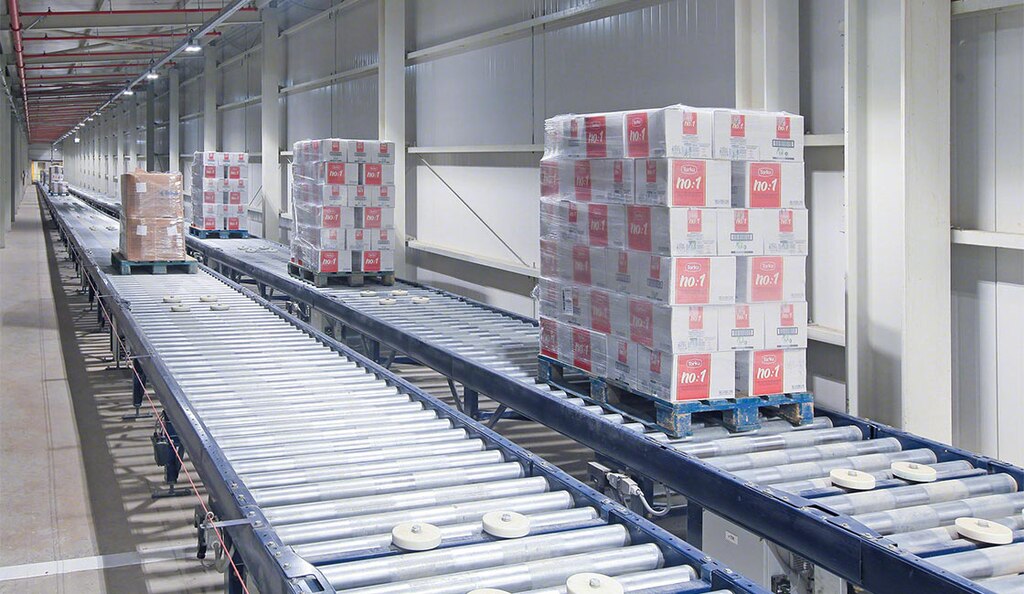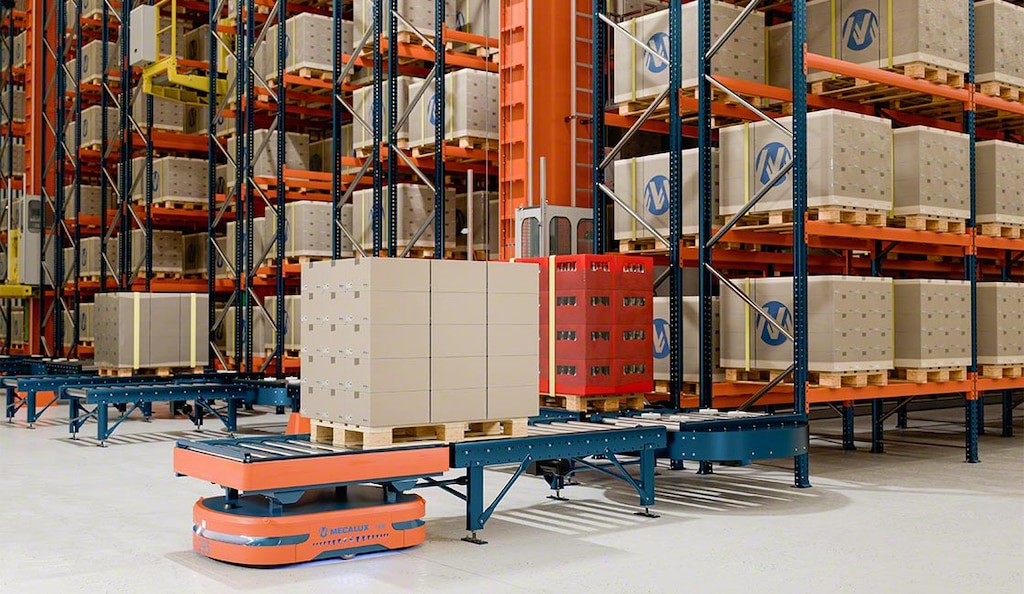
Accumulation conveyor: functions and benefits
Organizing the internal transport of pallets to order processing and shipping areas is much simpler with systems such as accumulation conveyors.
What is an accumulation conveyor?
An accumulation conveyor is a system consisting of rollers or chains designed to transport, accumulate, or distribute goods to different points as required by warehouse and/or factory operations. These conveyors aim to maximize efficiency in receiving, shipping, and handling unit loads.
Incorporating an internal transport system for pallets or boxes optimizes typically repetitive and similar routes, eliminating the need for manual handling by an operator. Accumulation conveyors are becoming increasingly common in all kinds of facilities. They’re versatile and easy to assemble — when installed by the right manufacturer.
Functions of accumulation conveyors
Common applications of accumulation conveyors include:
- Creating product queues for subsequent sorting.
- Moving goods for shipment in distribution centers.
- Starting, stopping, and restarting the flow of boxes and pallets.
- Supplying items to workstations.
Before deciding on a particular accumulation conveyor model or manufacturer, consider which products they’ll be transporting. Take into account their size, weight, and the durability of their packaging. It’s also advisable to anticipate the expected accumulation density and the performance rate requirements for downstream processes. To do this, you’ll want to follow the example of companies like Konya Şeker and consult with an intralogistics expert.

Types of accumulation conveyors
Accumulation conveyors can be broken down into two major categories: powered or non-powered, i.e., gravity-driven.
- Powered accumulation conveyors. Designed to transport pallets or boxes, these can comprise a roller or chain system. The main feature of powered conveyors is that the goods never touch, making them suitable for moving delicate items. Thus, they’re considered zero-pressure accumulation conveyors.
- Gravity conveyors. As with gravity flow racking systems, pallets slide forward on rollers made of electro-welded steel tubes. The components of these conveyors are configured according to the type and weight of the pallets they’re designed to hold. Although loads in these gravity-driven systems may touch slightly, the movement speed is controlled. These devices are also known as minimum-pressure accumulation conveyors since products may come into contact with each other.
Pallet conveyor systems can have mechanical or sequential accumulation:
- Conveyors with mechanical accumulation. These roller systems with brakes enable multiple pallets to accumulate. They have lower material and maintenance costs than their sequential accumulation counterparts due to fewer motors and sensors. These conveyors move unit loads and can transport 4 to 16 pallets on a single line driven by one motor or on 4 parallel lines of up to 4 unit loads each. As a rule, they’re adaptable to different temperatures and travel at speeds of up to 23' per minute.
- Conveyors with sequential accumulation. These straight conveyors with rollers or chains enable lengthwise flows, covering long distances within a facility. Each pallet’s position is controlled by photocells, which maintain a small gap between loads. These conveyors generally operate at speeds of about 25' per minute. They can act as a storage buffer and be combined with standalone conveyors for infeed and outfeed operations. Some models can also be used in subzero temperatures.

Benefits of accumulation conveyors
Incorporating accumulation conveyors into intralogistics operations offers numerous advantages. They can:
- Increase throughput rates by grouping items, ensuring that no equipment remains idle.
- Adapt to specific product types using either roller or chain configurations and customizable elements.
- Create a buffer between different processes for continuous, controlled workflows.
- Allow time for products to cool or dry in production environments.
- Prevent damage to goods.
- Merge lines.
AMRs compatible with accumulation conveyors
Powered accumulation conveyor systems are compatible with certain models of autonomous mobile robots (AMRs). For example, Interlake Mecalux’s AMR 1500 Pallet Conveyor, a platform with a 3,307 lb payload capacity, is designed to move pallets in a safe, controlled way. It can link various resources within a facility, transferring and retrieving goods from conveyors. This AMR model is apt for operations such as supplying automated storage and retrieval systems or dispatch areas. It’s outfitted with an upper conveyor for load transfer and navigates autonomously, without the need for operator guidance.
Streamline your intralogistics setup with accumulation conveyors
Are you looking to sort or move products using accumulation conveyors? Or maybe you want to speed up your intralogistics operations. At Interlake Mecalux, we can help. We’ve been working in intralogistics since 1966 and are storage solutions experts. We have extensive experience automating internal pallet and box flows in warehouses and production centers. Get in touch and we’ll analyze your company’s needs.
